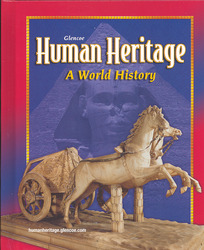
Human Heritage: A World HistoryChapter 38: The Cold War EraThe Cold War EraSoon after World War II ended, a split occurred among the major Allied powers. On one side, the Soviet Union supported communism. On the other side, the democratic United States, Great Britain, and France were anti-communist. Chapter 38 focuses on the Cold War, or period of hostility without fighting, that developed between these two sides in the years after World War II. Section 1 explains how relationships between Western and Communist powers have changed since World War II and discusses events that have taken place in the communist countries of East Germany, North Korea, Cuba, and North Vietnam. The section also explains how the space race between the United States and the Soviet Union was central to the Cold War. Section 2 discusses China before the establishment of communist government and focuses on what life has been like in the People's Republic of China under Mao Zedong and Deng Xiaoping. Changes that have taken place in the Soviet Union under Khrushchev, Brezhnev, and Gorbachev are also described. Section 3 introduces the term developing nations and explores how some of these countries have struggled with political and economic problems. Since independence, Indian leaders have worked to set up a stable government and to improve poor living conditions. In Africa, nationalism after World War II led to independence for many countries, yet they still faced numerous problems. Since gaining independence, most Latin American countries have benefited from, but have also resented, foreign investors. |  |















